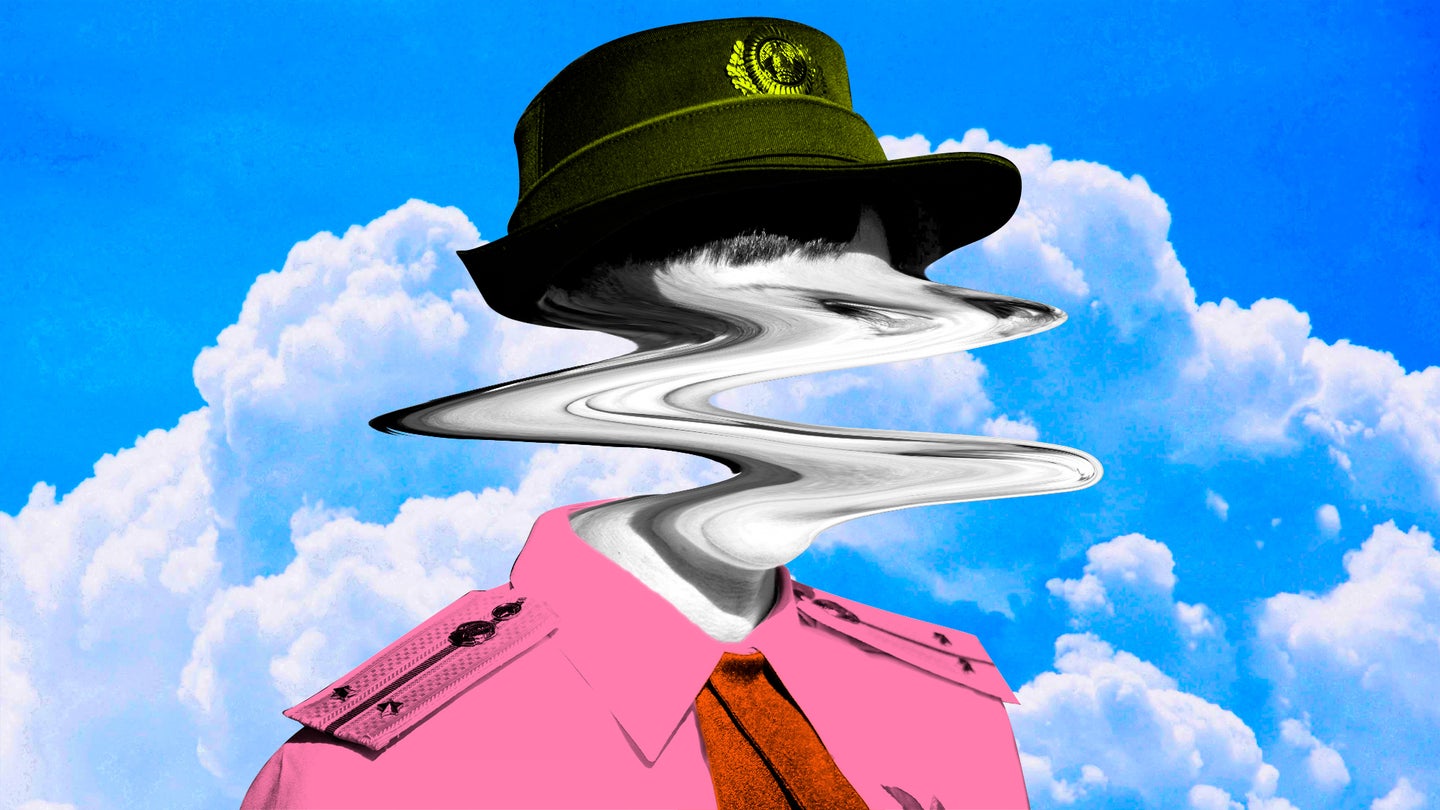In Head Trip, PopSci explores the relationship between our brains, our senses, and the strange things that happen in between.
USUALLY, pilots can navigate through cloudy and foggy conditions. They’re trained to do this. Substantially lowered visibility leaves them needing clarification and direction, and for that their instruments are essential. But in very rare cases, disagreement between their sensory experiences and reality can spell disaster.
Sometimes a pilot can sense that the plane is descending, but feel confused as to why. The instruments could also indicate that the plane is drifting left or right while the pilot’s senses are pulling them in a different direction, throwing their instincts into chaos and preventing them from correcting the flight’s orientation quickly enough. The plane is turning and heading downward and the pilot isn’t helping. They have entered a death spiral.
“It’s a catastrophic sensory illusion that can end up in a crash because someone relied on their perception of the plane’s orientation,” explains Jason Fischer, an assistant professor in the Department of Psychological and Brain Sciences at Johns Hopkins University. This is what happens when the pilot is tricked by their vestibular sense, “which allows you to perceive how your body is oriented in space when you don’t have enough visual information to go on,” he adds. A death spiral, or graveyard spiral, as it’s otherwise known, is caused by our innate impulse to rely on our sensory instincts.
It is the way our brains are wired that can cause such a chaotic scenario. To traverse our world, we rely on several different senses. The strongest cues are visual. There is also the somatosensory system that senses temperature, pain, and, in this case, pressure, as in the “seat of the pants” feeling of being pushed down into your plane seat when the aircraft gains altitude. And then there’s the neurovestibular system. The brain relies on fluid moving through the inner ear’s small canals to help establish where the body is oriented in space and where it is going. Our vestibular sense works fine on solid ground and registers rapid changes in the speed and direction of our movement. But slow changes in movement can go unnoticed, as when the plane first begins to spiral off course. Because this fluid can settle in the ear canals during flight, a pilot might believe they’re level even as they are getting closer and closer to the ground, tuning all the while.
All this spatial confusion and the lack of clear sightlines leave the pilot bewildered and trusting their tragically mistaken instincts rather than their instruments.
Fischer explained that the discombobulation that can result in a death spiral relates to how people combine information across the senses. For most of our worldly experiences, humans use multiple sources of information from different senses and collate that experience to emphasize the strengths of each piece of sensory data—as with smell and taste working together to create our experience of flavor.
“Oftentimes, one given sense that has the most precise information will dominate perception,” says Fischer. “This kind of thing happens all the time with vision and audition, like when you try to judge the location of something based on hearing it. The signals coming from the front of you can be perfectly identical to those coming from behind you if you make those spatial judgments based on sound. At that point, you can have a rough sense of the location of the sound, but then you use vision to try to dial it in—which has the more powerful effect on localizing.” In a way, your eyes correct your ears.
A death spiral is caused by similar sensory misunderstanding. The vestibular signals coming from the organs and canals in our ears are essentially accelerometers, providing a sense of our body’s movement through space and whether we’re starting to move faster. These signals also give us an idea of how we’re tilted relative to the ground due to gravity, a force that can cause acceleration. Our inner ears are fantastic at judging sudden movements, but gradual change? Not so much.
“The problem is that they’re just accelerometers,” says Fischer. “They can’t really tell the difference between the acceleration due to gravity and the acceleration due to actual movement through space. As far as those organs are concerned, your own motion or acceleration through space has the same signal as acceleration due to gravity.” In other words, it is hard to tell the difference between going forward and down and just going forward. Fischer adds, “In order to disambiguate those things, you then need information from another sense.”
Although a pilot may not be able to see the ground, they should be able to see the readings on their instruments. It is far safer to trust what the instruments say rather than what the body feels. It can mean the difference between life and death.
Read more PopSci+ stories.
The post How pilots end up in a ‘death spiral’ appeared first on Popular Science.
Articles may contain affiliate links which enable us to share in the revenue of any purchases made.
from | Popular Science https://ift.tt/oMBK5OQ





0 Comments